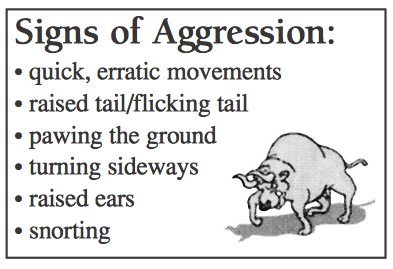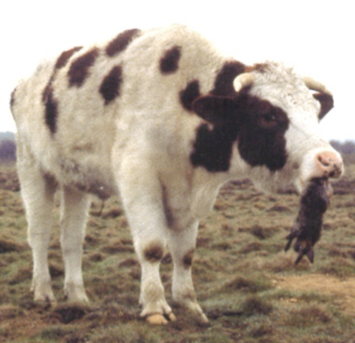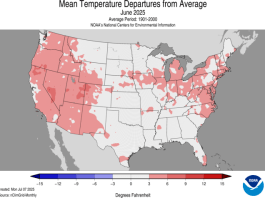Here are some tips for interacting with bulls as well as an “animal/English dictionary” of what your livestock are saying and what your response should be. We start with a list of from Joe Emenheiser of things to remember when working with bulls:
 1. Appreciate that a bull’s job is to protect the herd, particularly during breeding season.
1. Appreciate that a bull’s job is to protect the herd, particularly during breeding season.
2. Never trust a bull, no matter how tame he usually is.
3. Bull calves treated like human babies grow up to be mature bulls that lack normal respect of humans.
4. Humans have a greater ability to think than to overcome the laws of physics. So think first.
5. Never enter a bull pasture or confined space without an exit plan.
6. Cull for disposition
But it’s not just bulls that we have to look out for. Statistics show that animal related trauma accounts for one of every five hospitalized farm injuries. Nearly 40% of these occur in April, May and June. Here’s the breakdown of injuries caused by livestock type:
• Cows – 33%
• Horses – 46%
• Steers and calves – 14%
The high number of injuries caused by cows might happen when we come between cows and their calves, and because we may work with them more than steers. But we’ve heard that everyone has a cow or two that misbehaves. Like bulls, cull for disposition to protect yourself, your employees and your family.
Injuries can be easily prevented by paying attention to our livestock and how they demonstrate fear or aggression. To help you and your employees and visitors, here’s a refresher on the body language livestock use to communicate.
Your Animal/English Dictionary for Threat and Aggression
Flight is the first choice for most herbivores facing danger or conflict. When we remove that option, we need to ensure that the animal feels safe with us, or that we are going to be safe from it. So before approaching any animal, know your escape route or safety zone.
Animal Says: I’m afraid and I’ll get you if you don’t back off.
Signs that a cow feels unsafe include: quick erratic movements, raised ears and raised or flicking tail. As its fear increases, so does its demonstration of threatening behavior to include: bellowing (mostly in bulls), head bobbing, turning sideways to show off its size, shaking horns or head at the handler, snorting, pawing and/or horning the ground. These signals are designed to display the cow and its weapons to their greatest advantage so that you, or its opponent will back off.
Your Response:
Demonstrate that you are not a threat by turning sideways to decrease your size and walk diagonally away. You can also back away slowly, but don’t turn and run unless you feel like being chased.
Animal Says: “I’m dominant,” and “I’m a threat.”

While we turn sideways to appear smaller, that’s how an animal shows it’s full size and shows that it is in charge. To this cattle will add a dropped head to showcase it’s horns. The lower its head drops, the more threat the animal is communicating. Sheep will stretch out their necks to add to their size. Goats will drop their horns and may hunch up a bit to look bigger. Bison will lift their tails straight into the air.
If you don’t respond, the animal may begin to threaten you. Pawing the ground is a good sign that you’re about to be in big trouble. Horses, sheep and goats may rear up just before they begin to charge, while cattle drop to their knees. Bison’s tails will stretch over their backs and point to their heads, a sign that it’s too late and you’re going to be trampled.
Your Response:
In his book “Moving ’em: A Guide to Low Stress Animal Handling,” Burt Smith describes the options you have, based on your assessment of the situation:
“If the challenge is not a major threat display, such as a presentation of horns, and is given by a young or small animal, you may call its bluff by walking directly toward it.”
But if you don’t know the animal, or the display is threatening, turn sideways and walk away diagonally. Running is only an option if things have gone too far and you have to run or be hit. Run at right angles to the animal, or directly at it. Running at right angles makes the animal lose energy from having to change direction and is a technique rodeo clowns use when working with bulls. Likewise, running toward the animal shows that you are ready to fight, and it may decide not to engage.
Finally, these two tables from the Institute of Agricultural Rural and Environmental Health Fact Sheet by Lori Lockinger describe animal behavior and senses, possible challenges to them and how they react. Each table includes safe handling suggestions. If you have lots of visitors or employees new to working with livestock, consider posting these where they can review them often.
Be safe out there!





